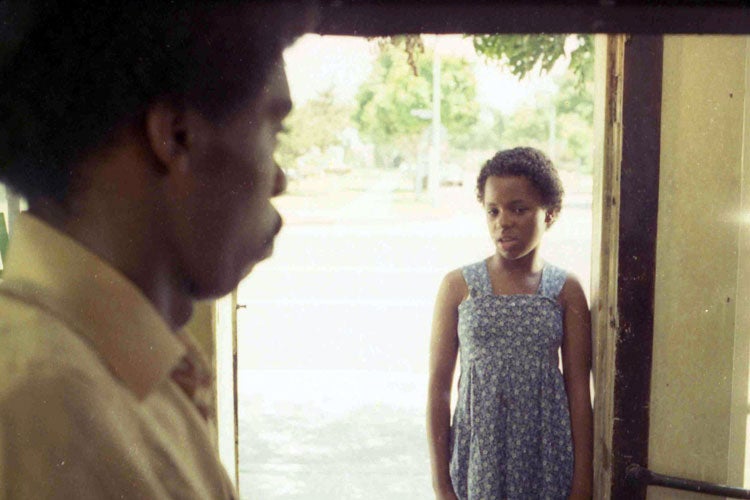You are here
My Brother's Wedding

When we first see Pierce Mundy (Everette Silas) in director Charles Burnett’s feature follow-up to Killer of Sheep (1977) he’s on the move. Making his way on a summer afternoon down a cracked sidewalk in South Central Los Angeles, he’s heading to see the mother of his best friend about to return from prison. A voice from behind catches him up short: “Hey, Pierce!” In the long shot that introduces him, Pierce turns mid-stride, looks to the woman calling him and in a single fluid move, looks away, exasperated, back toward his intended destination. “Come see my sister’s baby!” Though he’s tall and lean, we feel the petulant weight in his every step as he retreats in the direction he’s just come.
This sequence, though brief, deftly establishes the major themes of My Brother’s Wedding, and the power of Burnett’s unadorned style. Pulled in opposing directions by loyalty to family and friends, Pierce feels suspended in place. Recently laid off from his factory job, he marks time working at his family’s dry cleaning store under the watchful eye of his mother (Jessie Holmes) and swapping loaded jabs with his brother’s upper-middle-class fiancée (Gaye Shannon-Burnett). In the face of a diminished future, the return of Pierce’s best friend, Soldier (Ronald E. Bell), holds out a nostalgic escape to childhood, albeit one burdened by the decimation of his generation through violence and incarceration. “Where is everyone?” Soldier asks of the old crew. “It’s you and me,” Pierce replies.
While the contour of Pierce’s situation is familiar, Burnett fleshes it out with richly observed detail. Shooting on location, Burnett doesn’t simply capture locales; he reveals, through incidents and episodes both humorous and poignant, the network of relationships that pull and tug at the lives on screen. The revelation of character becomes seamlessly bound to the revelation of community. When, in the film’s finale, Pierce once again faces a choice of which direction to turn, both literally and metaphorically, his decision resonates well beyond his personal history.
After a troubled production, My Brother’s Wedding premiered at New Directors/New Films in 1984 in a 115-minute rough-cut version but it wasn’t released theatrically until 1991. More than a decade later, Burnett cut 30 minutes from the film for its 2007 re-release reflecting his original intentions. The shorter director’s cut is the version being presented in this series.
—Paul Malcolm
Film Credits
| Individual | Role(s) |
|---|---|
| Charles Burnett |
Director Producer Writer Cinematographer |
| Gaye Shannon-Burnett |
Producer Cast |
| Thomas Penick | Editor |
| Everette Silas | Cast |
| Jessie Holmes | Cast |
| Dennis Kemper | Cast |
| Ronald E. Bell | Cast |
To report problems, broken links, or comment on the website, please contact support
Copyright © 2025 UCLA Film & Television Archive. All Rights Reserved






 Mobile Navigation
Mobile Navigation

